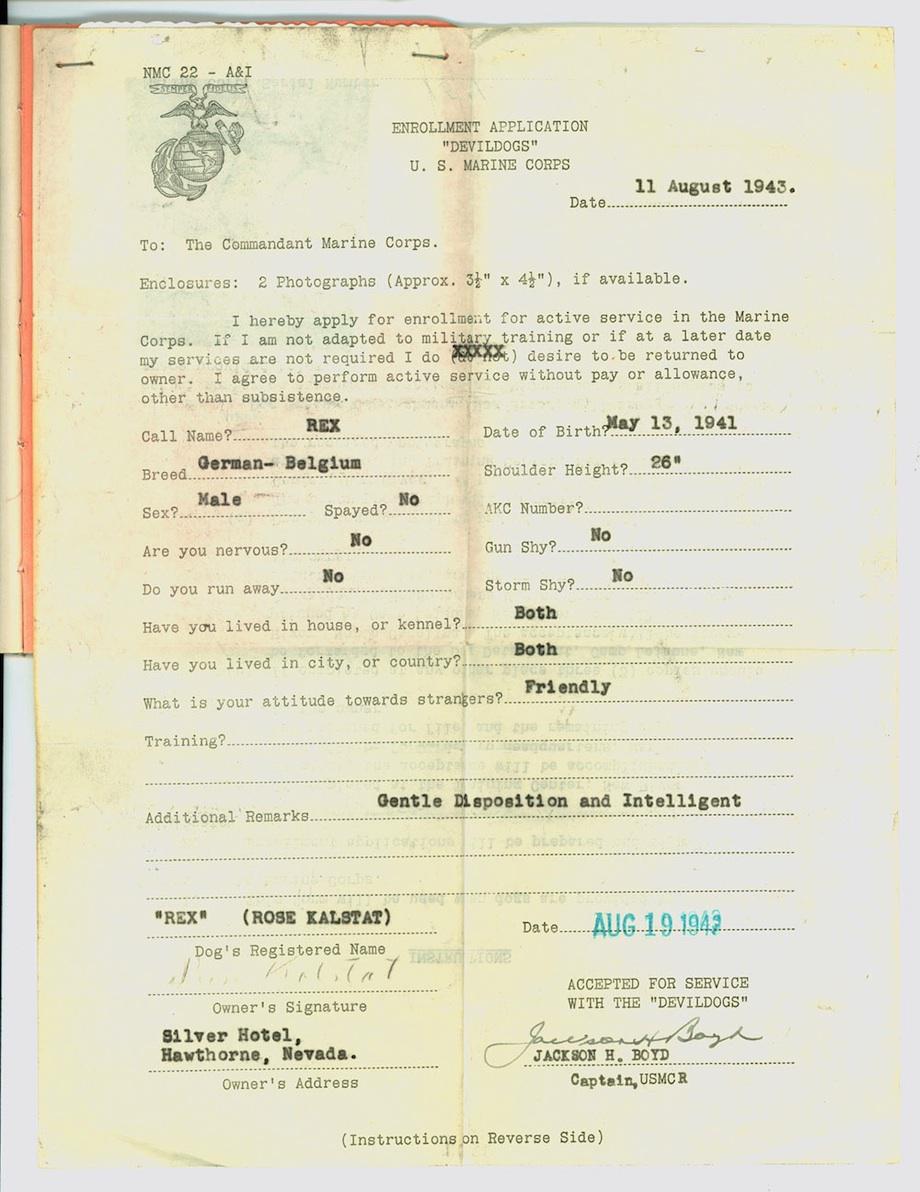The Vault is Slate’s new history blog. Like us on Facebook; follow us on Twitter @slatevault; find us on Tumblr. Find out more about what this space is all about here.
Soon after World War II erupted, the U.S. Marine Corps invited families who wanted to help the war effort to donate their pet dogs. It’s an indication of the era’s volunteerism that many people submitted their pets to be “enlisted.”
Potential donors were asked to fill out forms that required them to answer questions from the dogs’ perspective. The unusual personality quizzes asked questions including, “Are you nervous?” and “Do you run away?”
The quizzes weren’t just a gimmick. Not all of the dogs that were volunteered for service were accepted. Military records reveal that some were refused for “unsuitable temperament” or were determined to be “too queasy for combat.”
Those that made it into the Marine Corps received six weeks of obedience training at the Dog Detachment Training Center at North Carolina’s Camp Lejeune, which handled more than 1,000 dogs during the war. The Army, meanwhile, trained some 10,000 dogs of its own for its K-9 Corps.
While most military dogs of WWII were used for sentry duty in the United States, more than 1,800 dogs were sent into combat starting in 1942. Military dogs received specialized training as scouts, messengers, or infantry. Infantry dogs alerted troops of the enemy’s presence with silent signals rather than barks.
Forty-page books, one of which was created for each dog enrolled in the Marine Corps, reveal specific dogs’ combat contributions.* One canine’s record states: “War dog Cookie was on one combat patrol. While on nightly security duty during the Guam operations this dog alerted [her handler to the presence of] 10 Japanese soldiers, six of which were killed. This dog carried a vital message from an out-post to the division CP, of which there were no other means of communication.”
Many of the dogs that survived battle suffered from shell shock, and several died from “combat fatigue.” Those that survived were retrained to enter civilian life and were returned to their owners or remained with their war handlers.
At least one dog owner received a letter from the commandant of the Marine Corps on his dog’s “outstanding performance of duty in combat.”
Dogs continue to serve in the armed forces to this day. The first national monument to dogs that served in wars will be unveiled later this year at Lackland Air Force base near San Antonio, Texas.

National Archives at College Park, Md.

National Archives at College Park, Md.
*Correction, April 11, 2013: This post originally misstated that a 40-page record book in the archives held a record for each dog in the Marines. Each dog got its own 40-page book.